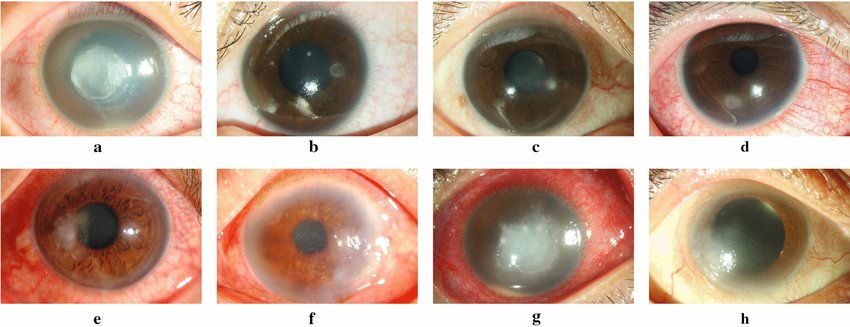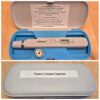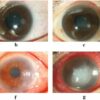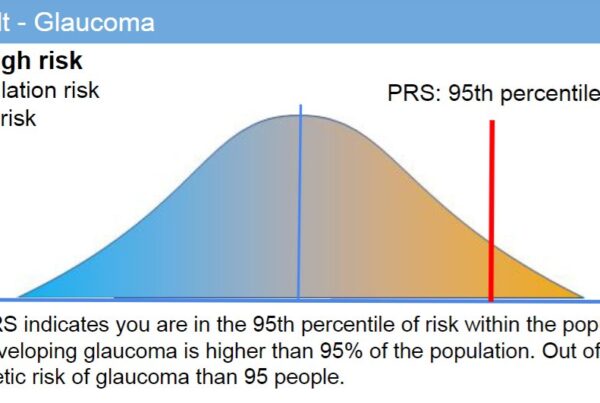Advantages and Necessity of Diaton Through-the-Eyelid (Transpalpebral, Trans-Scleral) Tonometer
The Diaton Tonometer offers an innovative approach for intraocular pressure (IOP) measurement through the eyelid (transpalpebral) and sclera (trans-scleral), which provides significant advantages, particularly in the context of corneal infections and disorders, as discussed in the management of atypical corneal infections. These infections, such as those caused by fungi, acanthamoeba, and other resistant organisms, often result in compromised corneal surfaces, making traditional corneal-contact tonometry methods less viable and potentially harmful. Diaton presents an effective alternative that avoids direct corneal contact, a critical factor in patients with corneal infections or post-surgical recovery, where corneal integrity is at risk.
Addressing Atypical Corneal Infections
In cases of keratitis, especially from resistant organisms like acanthamoeba or fungal pathogens, the corneal surface can be severely compromised. Traditional tonometers that require corneal contact risk worsening infections or exacerbating inflammation. Additionally, conditions such as corneal ulcers, epithelial defects, and post-surgical recovery scenarios, including after corneal transplants, pose risks when corneal-contact methods are used. Diaton eliminates this issue entirely by measuring IOP via the eyelid and sclera, reducing the risk of further complications or infections.
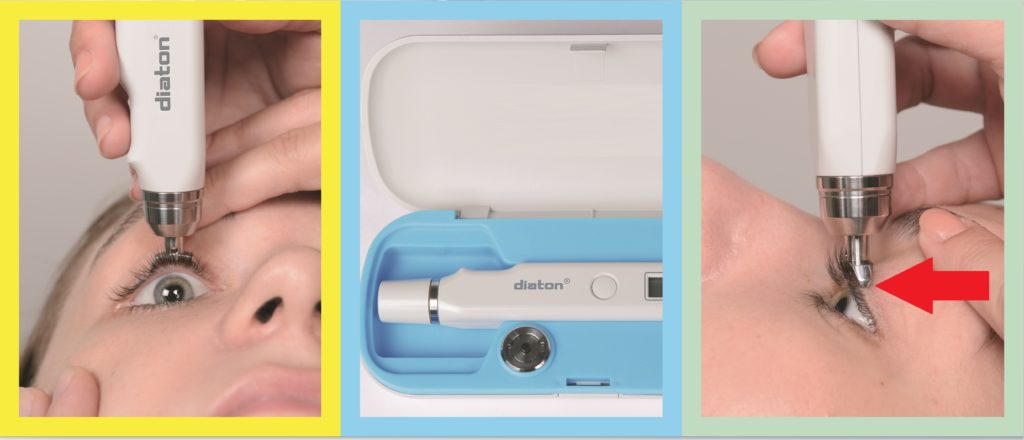
Benefits for Atypical Keratitis Management
In managing atypical corneal infections, such as those resistant to common treatment, the Diaton Tonometer stands out by ensuring that eye pressure can be safely monitored without disturbing the delicate and often compromised corneal surface. Given that such infections are often linked to prolonged use of contact lenses or post-surgical complications, the necessity for non-contact solutions like Diaton becomes evident. The tool provides accurate readings without the need for anesthetic eye drops, reducing patient discomfort and preventing the risk of secondary infections.
Application in Diverse Patient Profiles
The Diaton Tonometer’s transpalpebral and trans-scleral approach makes it suitable for a wide range of patients, from those recovering from corneal surgeries, such as transplants, to individuals with pre-existing conditions like keratoconus or glaucoma. The device’s non-invasive nature also makes it ideal for patients with compromised immune systems, where the risk of infection from corneal contact must be minimized. Furthermore, individuals who suffer from corneal infections, such as fungal keratitis, benefit from this contactless approach as it allows continuous monitoring of IOP while the infection is treated without disturbing the cornea.
The Role of Diaton in Modern Ophthalmology
In modern ophthalmic practice, where conditions such as corneal thinning, transplants, and atypical keratitis are increasingly prevalent, the Diaton Tonometer offers a critical advantage. Not only does it enable safe and accurate IOP measurement, but it also protects patients from the risks associated with direct corneal contact. Its versatility in screening and managing patients with keratitis, ocular trauma, or post-operative recovery ensures that this tool is indispensable in maintaining eye health without compromising corneal integrity.
Conclusion
The Diaton Tonometer’s ability to measure IOP through the eyelid (transpalpebral) and sclera (trans-scleral) makes it a necessary innovation in ophthalmology, particularly for managing patients with keratitis or corneal conditions. With its non-invasive approach, it prevents the risks posed by corneal-contact tonometers, ensuring safe, accurate, and infection-free measurements across diverse patient profiles.
To learn more about Diaton Tonometer – visit: www.TonometerDiaton.com
Or contact Team Diaton at 1-877-342-8667

